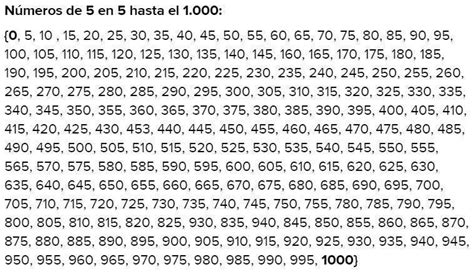Cuanto Es El 5 De 1000
Kalali
Mar 22, 2025 · 4 min read

Table of Contents
What is 5% of 1000? A Comprehensive Guide to Percentages
Calculating percentages is a fundamental skill in many aspects of life, from managing finances to understanding data in various fields. This comprehensive guide will delve into the question, "What is 5% of 1000?" We will explore various methods of calculating this, explain the underlying concepts, and provide practical applications to solidify your understanding. This will go beyond a simple answer, offering you a robust understanding of percentage calculations.
Understanding Percentages
Before diving into the calculation, let's refresh our understanding of percentages. A percentage is a fraction expressed as a ratio of 100. The symbol "%" represents "per hundred," meaning parts per 100. Therefore, 5% can be written as 5/100 or 0.05.
Method 1: Using the Fraction Method
This is the most straightforward method for calculating percentages. We can express 5% as a fraction and then multiply it by 1000:
5% of 1000 = (5/100) * 1000
Simplifying the fraction, we get:
= (1/20) * 1000
= 1000/20
= 50
Therefore, 5% of 1000 is 50.
Method 2: Using Decimal Conversion
This method involves converting the percentage to a decimal and then multiplying it by the number. As mentioned earlier, 5% is equivalent to 0.05.
5% of 1000 = 0.05 * 1000
= 50
This method is particularly useful when using calculators, as it eliminates the need to work with fractions.
Method 3: Using Proportions
This method is especially helpful for understanding the relationship between the percentage, the part, and the whole. We can set up a proportion:
x/1000 = 5/100
Where 'x' represents 5% of 1000. To solve for 'x', we can cross-multiply:
100x = 5000
x = 5000/100
x = 50
This method reinforces the concept that percentages represent a ratio of a part to a whole.
Practical Applications of Percentage Calculations
Understanding percentage calculations is crucial in various real-world scenarios. Here are a few examples:
-
Finance: Calculating discounts, interest rates, taxes, and profit margins often involves percentage calculations. For instance, a 5% discount on a $1000 item would result in a discount of $50.
-
Data Analysis: Percentages are essential for interpreting data and presenting it in a clear and concise manner. For example, in a survey of 1000 people, if 5% responded positively to a question, it means 50 people gave a positive response.
-
Science and Engineering: Percentages are frequently used in scientific calculations, such as expressing concentrations, errors, and efficiency rates.
-
Everyday Life: We use percentages in various aspects of daily life, from calculating tips in restaurants to understanding sales figures.
Calculating Different Percentages of 1000
Now let's extend our understanding by calculating various percentages of 1000. This will solidify the concept and highlight the versatility of the methods discussed above.
10% of 1000:
Using the decimal method: 0.10 * 1000 = 100
25% of 1000:
Using the fraction method: (25/100) * 1000 = (1/4) * 1000 = 250
75% of 1000:
Using the decimal method: 0.75 * 1000 = 750
100% of 1000:
This is the whole amount: 1000
Calculating a Percentage of a Different Number
Let’s broaden our understanding even further by applying these methods to a different number. Let’s calculate 5% of 2500.
Method 1 (Fraction): (5/100) * 2500 = 2500/20 = 125
Method 2 (Decimal): 0.05 * 2500 = 125
Method 3 (Proportion): x/2500 = 5/100; 100x = 12500; x = 125
Solving for the Percentage: Inverse Percentage Problems
Sometimes, instead of finding a percentage of a number, you'll need to find what percentage one number is of another. For example, what percentage is 50 of 1000?
We can set up a proportion:
x/100 = 50/1000
Cross-multiplying:
1000x = 5000
x = 5000/1000
x = 5
Therefore, 50 is 5% of 1000.
Advanced Percentage Applications: Compound Interest
Understanding percentages becomes even more important when dealing with compound interest, where interest is calculated not only on the principal amount but also on accumulated interest. Calculating compound interest involves repeated percentage calculations over time.
Imagine you invest $1000 at an annual interest rate of 5% compounded annually. After one year, you'll earn 5% of $1000, which is $50. Your new balance will be $1050. In the second year, the interest is calculated on $1050, not just $1000. This compounding effect leads to exponential growth over time. More complex formulas are used to calculate the total amount after multiple compounding periods.
Conclusion: Mastering Percentage Calculations
Understanding how to calculate percentages is a critical life skill. This article has provided a thorough explanation of different methods to determine a percentage, focusing specifically on calculating 5% of 1000 and demonstrating how to adapt these methods to other scenarios. By grasping these fundamental concepts and practicing the various calculation methods, you will be well-equipped to tackle percentage-related problems in various contexts, from daily finances to complex data analysis. Remember, the key is to choose the method that best suits your needs and level of comfort, whether it's the fraction method, the decimal method, or the proportion method. Practice makes perfect, so keep practicing and you'll soon master percentage calculations!
Latest Posts
Latest Posts
-
How Many Inches Is 114 Cm
Mar 22, 2025
-
Cuanto Es El 5 De 1000
Mar 22, 2025
-
How Can Indoor Farming Change The Taste Of Plants
Mar 22, 2025
-
Highest Common Factor Of 12 And 8
Mar 22, 2025
-
How Do You Write 0 2 As A Percentage
Mar 22, 2025
Related Post
Thank you for visiting our website which covers about Cuanto Es El 5 De 1000 . We hope the information provided has been useful to you. Feel free to contact us if you have any questions or need further assistance. See you next time and don't miss to bookmark.
